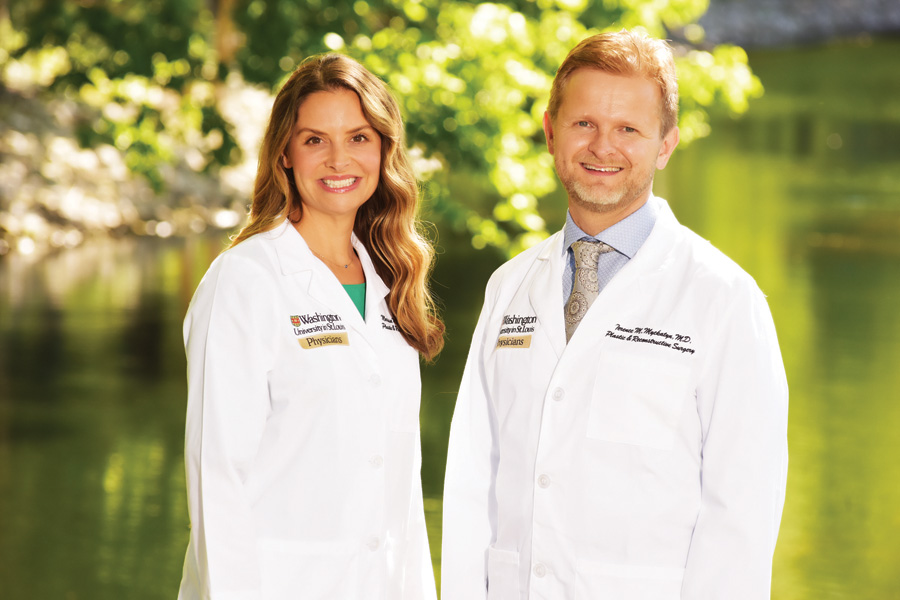As we age, our facial skin tends to show the effects of time more dramatically than other parts of the body. The older we get, the more wrinkles, lines, indentations, sagging, age spots and other discolorations stand out in the mirror each morning. But modern cosmetic procedures can hit the rewind button on aging skin and give both women and men a more youthful look with minimal downtime.
Dr. Terry Myckatyn, a Washington University plastic and reconstructive surgeon, says noninvasive facial rejuvenation procedures generally fall into two categories, and both offer alternatives to more involved surgical procedures. The first category includes injectable therapies such as Botox to correct wrinkles and fillers to restore volume; the second is a group of cosmetic devices that use energy to improve skin’s look and volume.
Myckatyn says Botox is often assumed to be a filler, but it’s actually a neurotoxin that paralyzes muscle tissue in the superficial layers of the skin. “If the muscle can’t contract, it can’t cause the skin to wrinkle,” he explains. “Fillers, on the other hand, are substances injected to add volume in areas like the lips and cheeks and to correct depressions in the skin.” Some of the most common fillers are Juvederm, Restylane and Radiesse, Myckatyn says. “Other procedures are done with devices like lasers that can change the complexion,” he notes. “There’s a whole host of them. They can smooth fine lines and wrinkles and reduce skin pigmentation like red or brown spots.”
According to Myckatyn, modern procedures like ablative fractionated laser therapy can help tighten sagging facial skin to give patients a more youthful look. Another newer technique is Ultherapy, which uses ultrasound energy to gently heat layers of tissue to tighten them. “Ultherapy is a good choice for patients who don’t want a face-lift or who want to touch up a previous face-lift,” he notes. “Surgical procedures generally last longer and provide more significant effects, but these cosmetic therapies are good options for patients who aren’t ready for anything major.”
Myckatyn says his office sees a lot of patients interested in reducing fat or sagging skin under the chin. “I think there is a greater emphasis on this now because everyone takes selfies with their phones, and leaning back for a photo makes the double chin more noticeable,” he says. “But there are several ways to address it.” Some of the most common therapies are injectable Kybella, which creates inflammation in the tissue under the chin, causing the body’s immune system to clear out fat cells; CoolSculpting, which freezes fat cells and also causes them to be removed by the immune system; and Ultherapy, the tightening procedure with heat.
Microneedling is an option for patients wanting to improve the texture of facial skin. “It uses tiny needles to cause small, controlled injuries in the skin that stimulate an immune response,” Myckatyn explains. “This helps remodel the skin’s collagen and rejuvenates the look of it.” A similar procedure, radiofrequency microneedling, uses the same concept but incorporates heat for a tightening effect.
“Skin care products and procedures evolve quickly,” Myckatyn says. “Washington University Physicians stays at the forefront of new technologies.” As a member of the ‘Hot Topics’ committee of the American Society of Aesthetic Plastic Surgery, he learns about new treatments as they’re introduced. “We help make sure they are safe and effective,” he says.
Washington University Physicians offers facial rejuvenation services and procedures carefully tailored to the needs of each patient. For more information, call 314.996.8800 or visit westcountyplasticsurgeons.wustl.edu.
Cover design | Washington University Physicians








